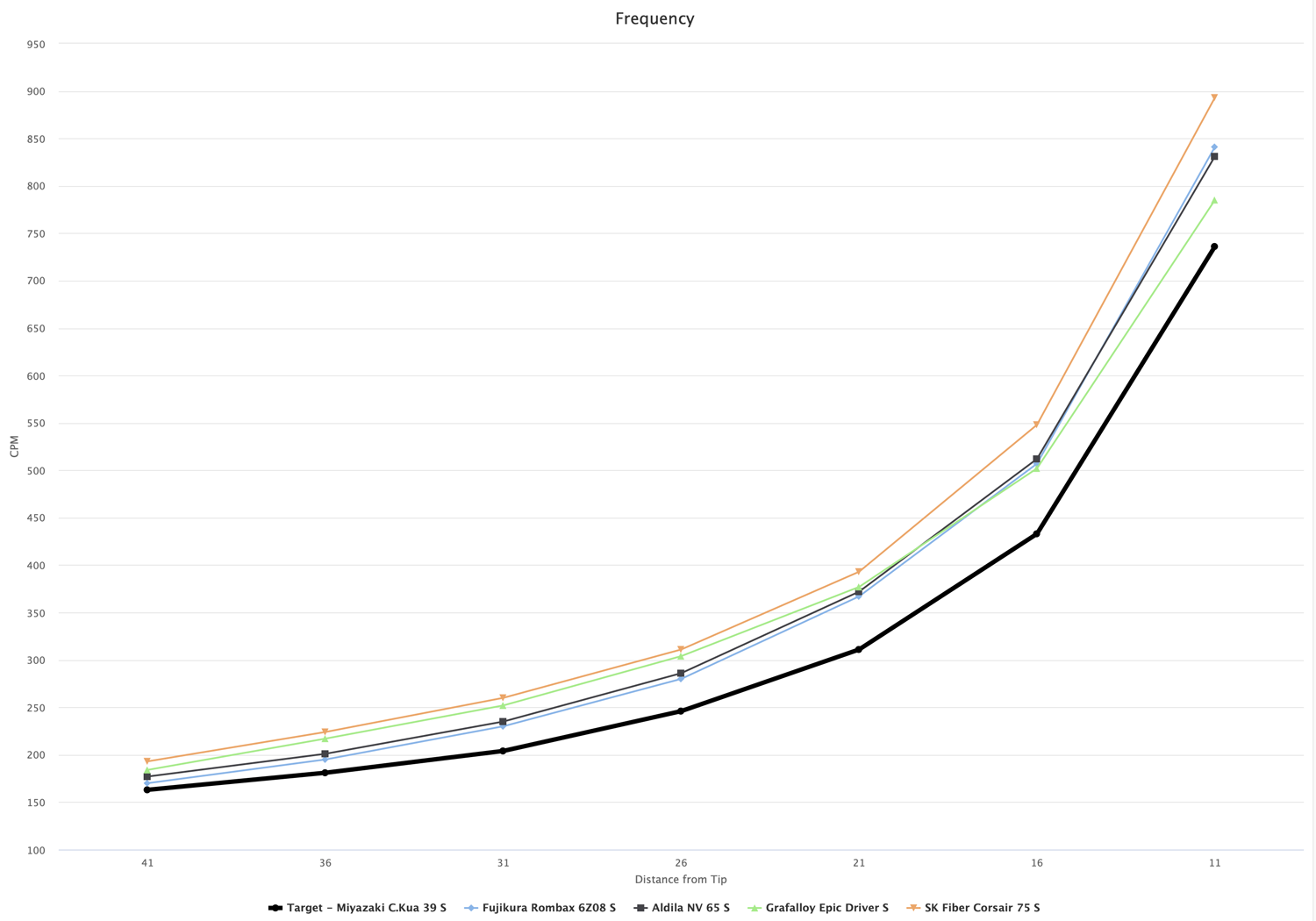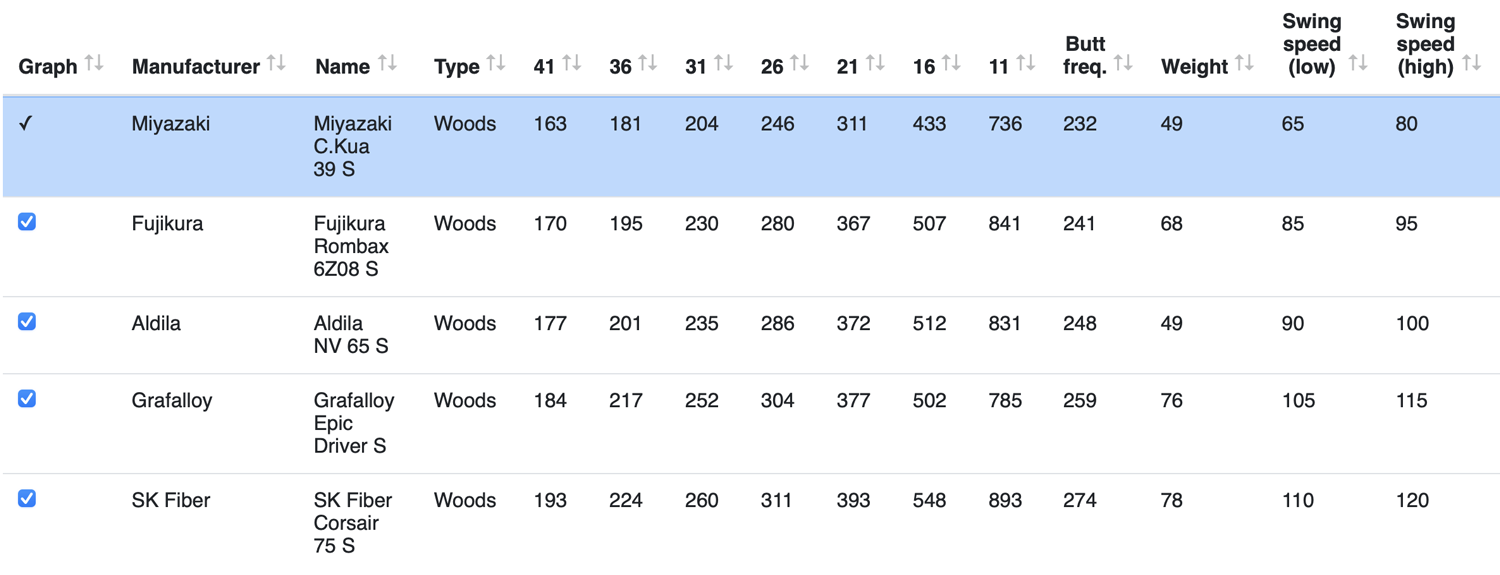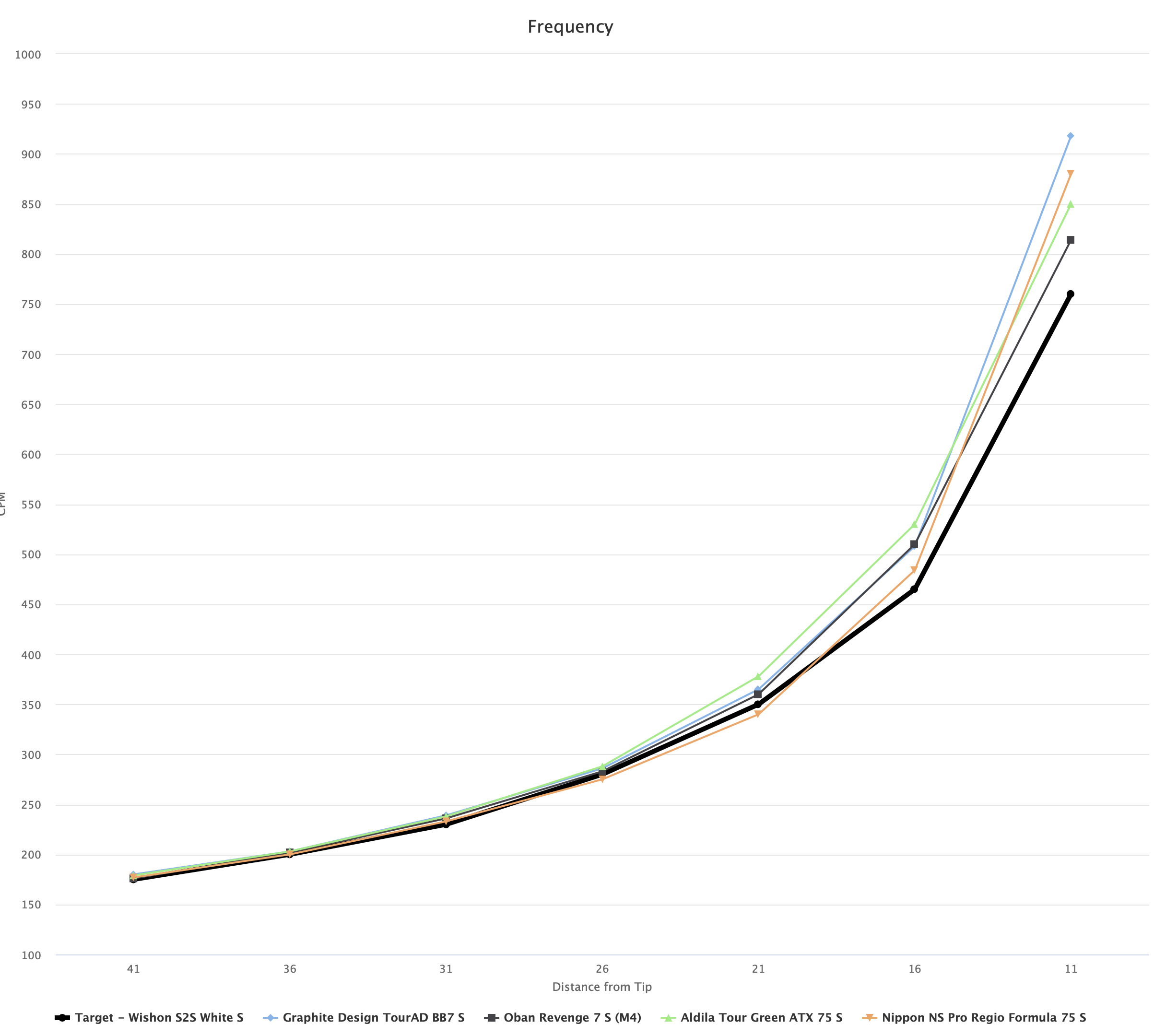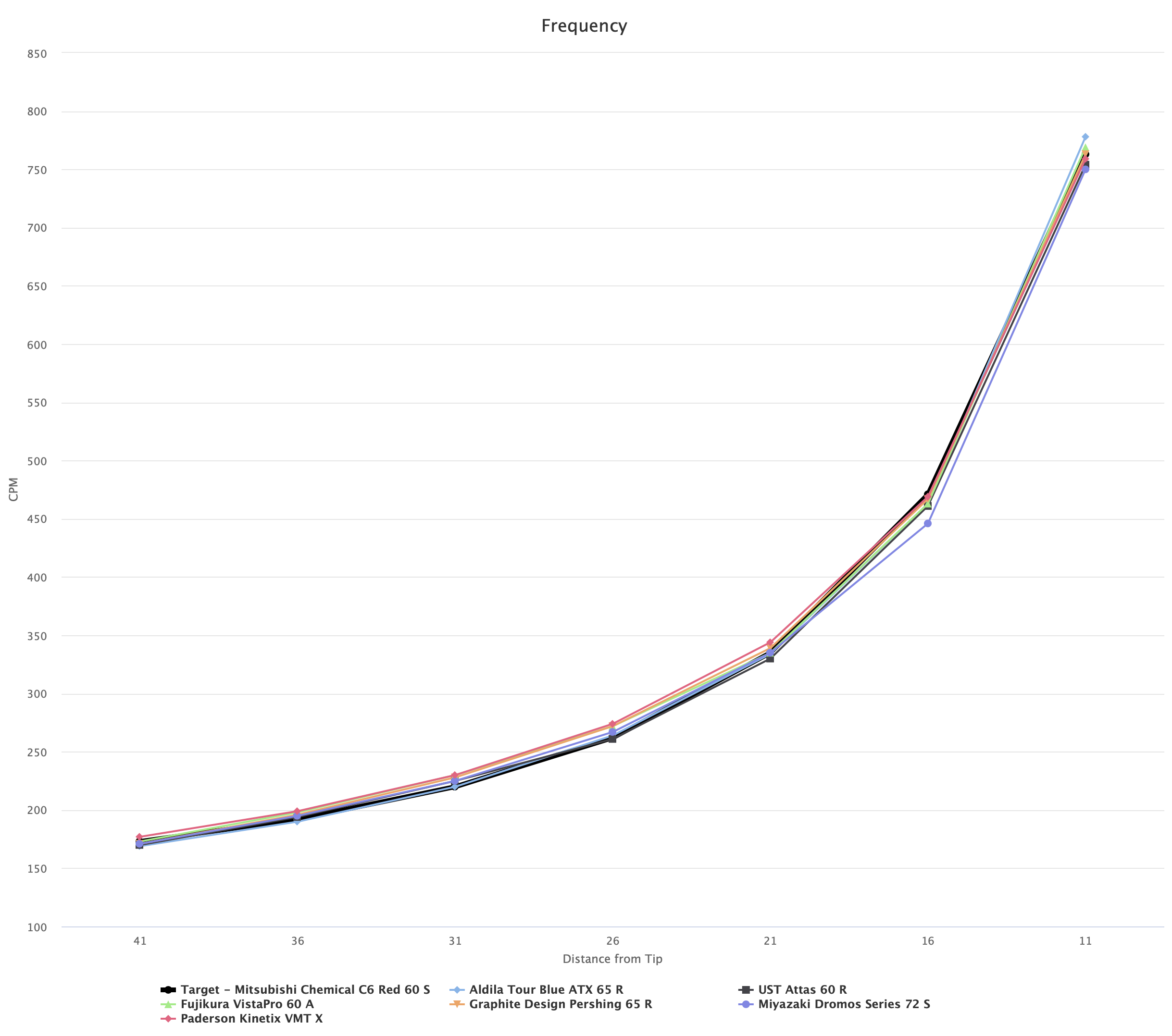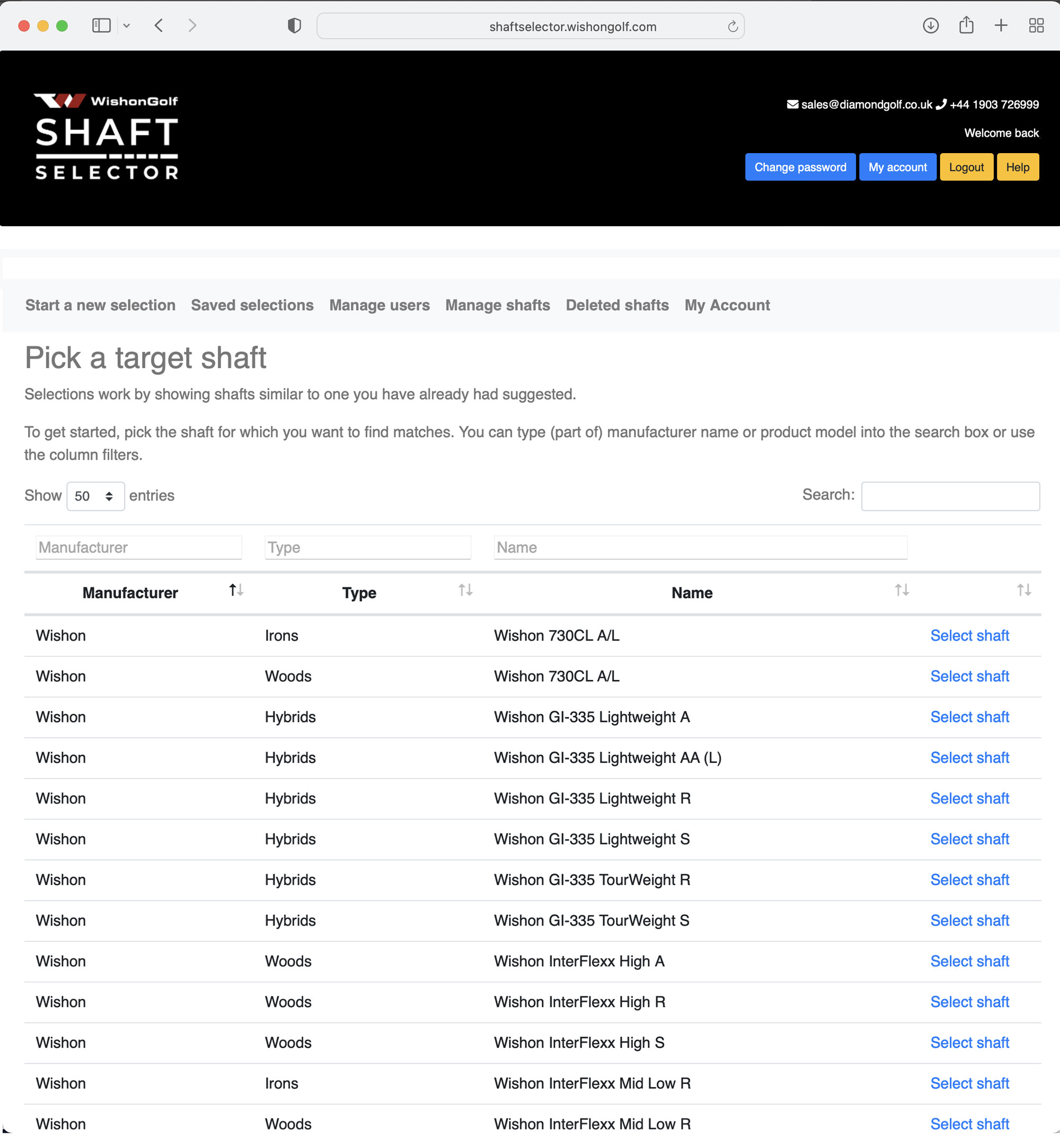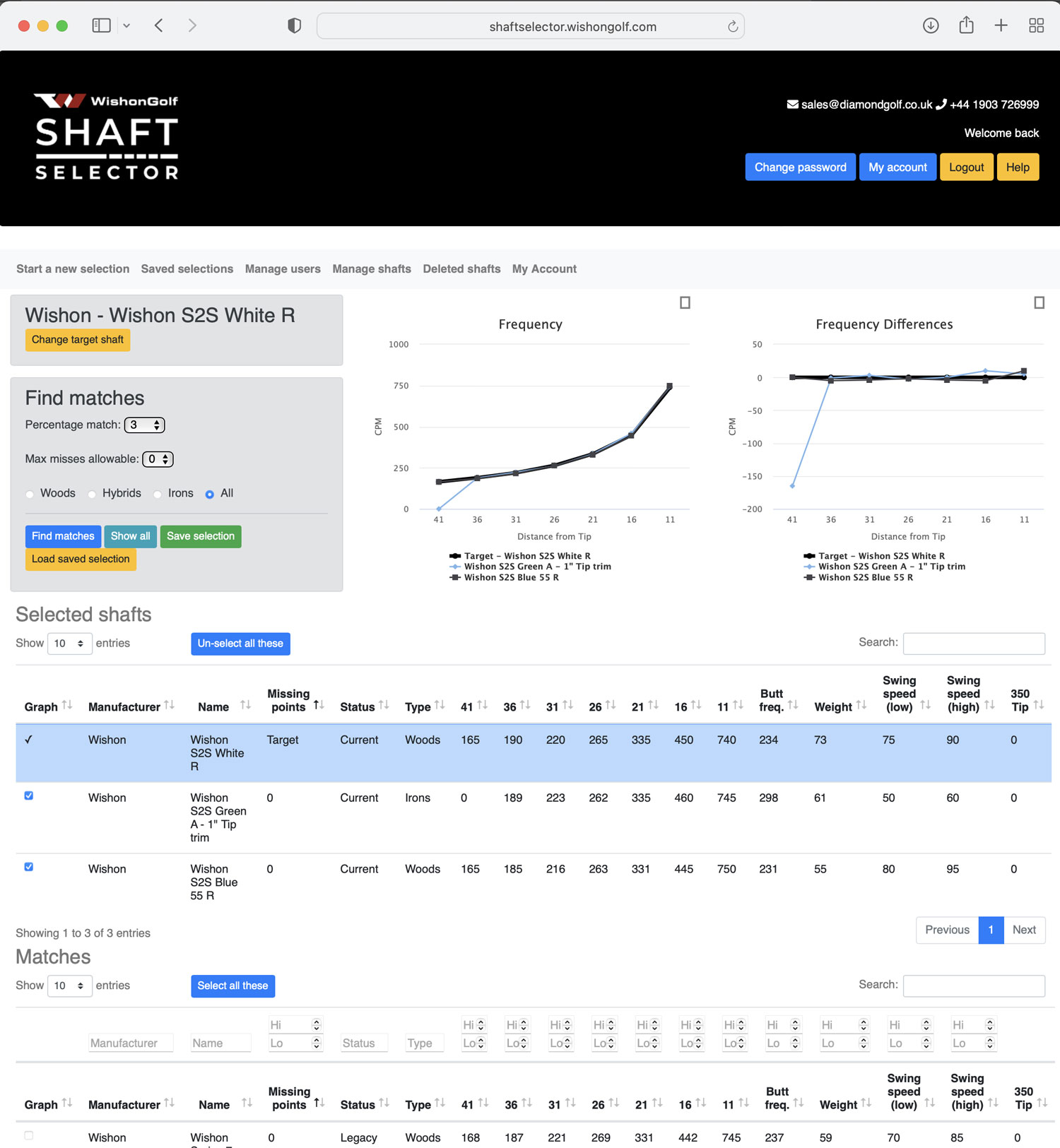
Wishon Shaft Selector is a matching and comparison system for shafts, based upon the shaft profiling techniques developed by Tom Wishon. Shaft Selector provides detailed shaft data and allows for easy graphical comparison.
Shaft Selector is an ongoing project amassing a database of empirical shaft data and analysis that will serve as an indispensable tool for the clubmaker, clubfitter or golf professional.
Shaft Selector provides quantifiable information about a shaft’s physical characteristics and predicted playing behaviour. The end goal being to quickly and accurately fit a golfer with a minimum of effort.
In the past, shafts were typically characterised by torque, flex and/or butt CPMs, however as shaft construction became more sophisticated, these designations became meaningless. For example, today’s shaft designers can engineer various portions of a shaft to have specific characteristics such as “tip stiff”. The problem for the clubfitter is that as shafts have become more complex, the fitting of a golfer becomes more trial and error.
Tom Wishon recognised this problem and began a series of experiments and research that led to the concept of a shaft’s “bend profile”. Dividing the shaft into a series of seven segments (points) and measuring the stiffness of that particular section by use of frequency meter meant that these frequencies could be plotted and the result was a ‘bend profile’ for the shaft, which empirically described the shaft’s stiffness.
ABOUT SHAFT PROFILING
Flex designations provided by manufacturers are all the same – ‘R’ or ‘S’ for example. But in reality the actual stiffness of their shafts vary, sometimes considerably, from each other. There is no specific right or wrong to how a manufacturer should label their shaft, but it does mean that differing interpretations of stiffness will result in a variety of different ‘feels’ from a broad range of shafts all labelled with the same basic flex designation, ie ‘R’ or ‘S’.
The purpose of shaft profiling is to provide a more accurate measurement of a shaft’s stiffness profile, and serve as a method for standardising shaft flex information for all manufacturers. The bend profile measures the flex over the full length of a shaft, with frequencies taken at 5″ intervals to create an easy to read profile curve that determines the true stiffness profile of any particular shaft, and allow for simple comparison to highlight differences between a range of shafts.
In the example below from the Shaft Selector, we can see five shafts labelled by their manufacturers as ‘S-Flex’. In actuality, the stiffness measurements on each of the shafts’ bend profile represent a range of three full flexes, or stated another way, represent a swing speed difference of more than 30mph.
This is just one example of the inconsistencies of shaft flex ‘labelling’.
Only through a measured shaft bend profile is it possible to determine the true stiffness and flex of a chosen shaft, and consequently allow the clubfitter to provide a better fit for the golfer.
BREAKING DOWN A SHAFT PROFILE
Most manufacturers of shafts will create their shaft flex designation from a single frequency measurement at the butt section of the shaft. With shaft profiling we take seven frequency measurements at 5” intervals along the shaft length. The seven frequency measurements thereby provide us with stiffness ranges in three basic sections: –
- Butt section
- Mid section
- Tip section
Each section of the shaft can be described as Flexible, Medium Stiff (REG), Stiff or Extra Stiff. This gives rise to the notion of having shafts which can be described, for example, as butt stiff or tip stiff in feel. Only by measuring a ‘shaft profile’ can we empirically describe a shaft’s flex feel at each stage of the golf swing – backswing – transition – downswing – release.
Golfers swing differently and apply pressure to the shaft at different stages of the swing, which result in differing feels, and ultimately different shot results. By using shaft profiling a clubfitter can more easily match specific shafts to a golfer’s swing technique.
CPM (FREQUENCY) RANGES
When measuring the shaft along it’s length it is important to note that a full flex difference in the frequency range will differ as we get nearer the tip. The CPM numbers increase the further along the shaft we clamp and measure. The following table describes the frequency range differences for each section.

SHAFT PROFILE EXAMPLES
EXAMPLE 1 – Matching Butt Section Frequency
- At 41″ each shaft is within approx 5cpm
- Tip flex range is 760 to 918 (158 diff)
- Equivalent to at least 3-4 full flexes
Wishon S2S White S (75g)
Graphite Design Tour AD BB7 S (75g)
Oban Revenge 7 S (75g)
Aldila Tour Green ATX 75 S (75g)
Nippon N.S.PRO Regio Formula 75 S (75g)
EXAMPLE 2 – Matching Bend Profiles
When you know your target shaft, this example gives the options available with the same profile.
Weight range of shafts = 5g spread
Mitsubishi C6 Red 60 S (68g)
Aldila Tour Blue ATX 65 R (69)
UST Attas 60 R (69g)
Fujikura VistaPro 60 A (67g)
Graphite Design Pershing 65 R (70g)
Miyazaki Dromos Series 72 S (70g)
Paderson Kinetix VMT X (65g)
THE BENEFITS OF SHAFT PROFILING
+ Allows for matching swing moves to shaft stiffness profiles
+ Enables analysis of shafts with similar flex patterns
+ Predict adjustments in ball trajectory and flight
+ Removes the need to rely on traditional flex categories
+ Match the profiles of discontinued shafts with newer models
USING SHAFT SELECTOR
Wishon’s Shaft Selector exists as a database of bend profile data for the clubfitter or golf professional to use on a daily basis. The Shaft Selector’s data range includes: manufacturer, shaft type, bend profile, weight, swing speed recommendation and an availability status.
As an ongoing project, the database is also updated periodically to include new shaft data for analysis.
How to Use the Shaft Selector
1. Search for a target shaft from the Shaft Selector database
2. Select matches using the percentage match feature, or pick manually from the database
3. View empirical shaft data displayed in both table and graph form
4. Save your selection for future use and analysis.
Over 1500 Shafts
From various manufacturers and makers
Display Data
In a graphical comprehensible manner
Compare
Multiple shaft profiles
Search
For shafts that meet specific criteria
To apply for a subscription to Shaft Selector, please complete the form below.
Subscriptions are available for Wishon & Diamond Golf customers only.
If you do not have an account with us, please apply for an account here
Subscribe to Shaft Selector

© COPYRIGHT 2024 WISHON GOLF

